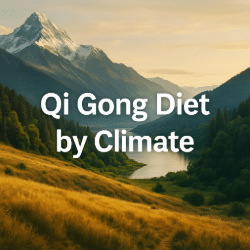Geography and Qi Gong Diets: How Climate and Location Shape Energetic Nutrition
Explore how geography and climate shape energetic nutrition in Qi Gong practice. Learn how altitude, humidity, and local foods affect yin–yang balance and digestion.


